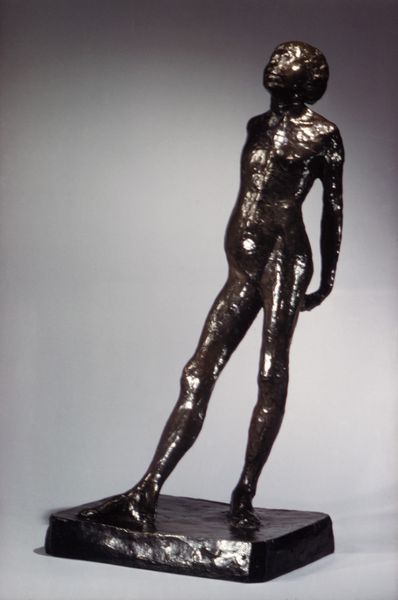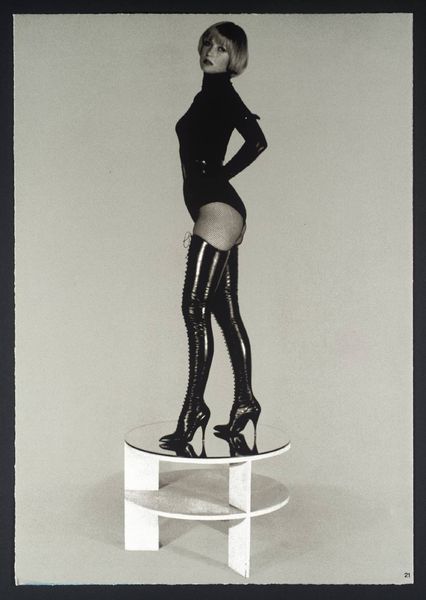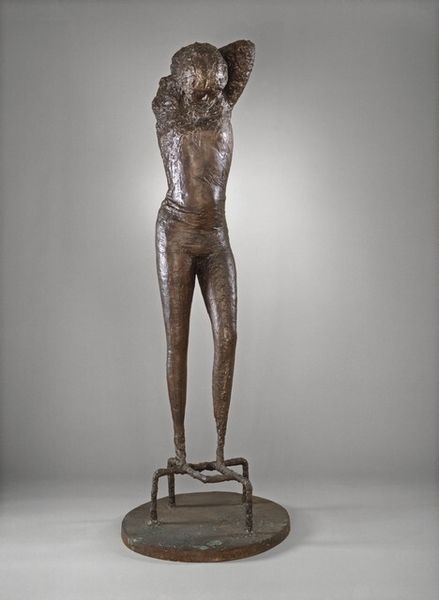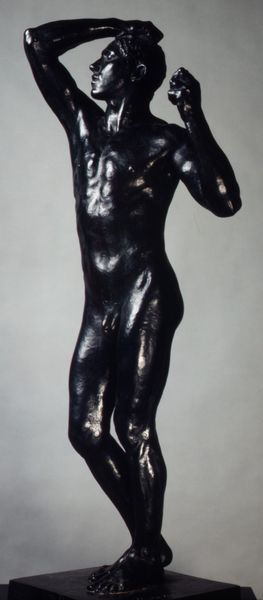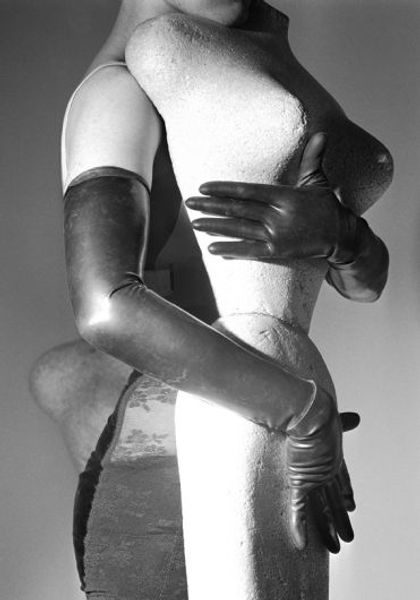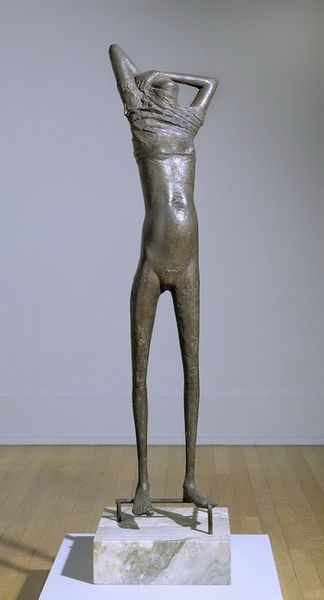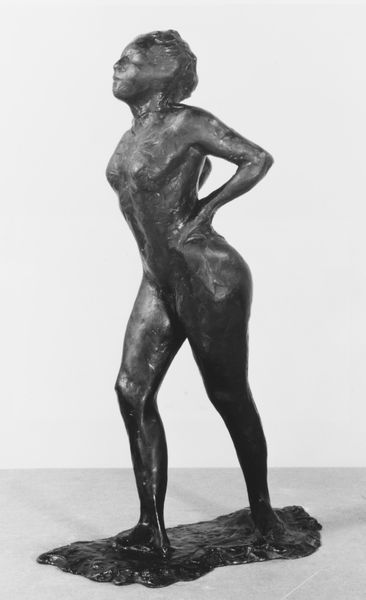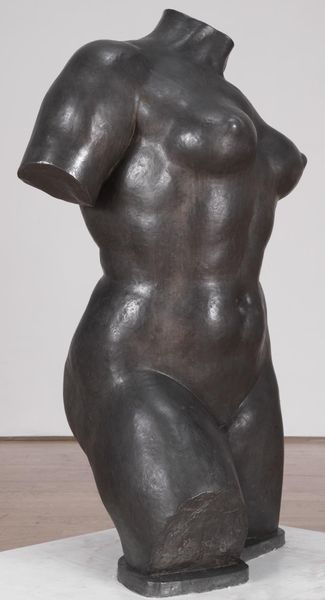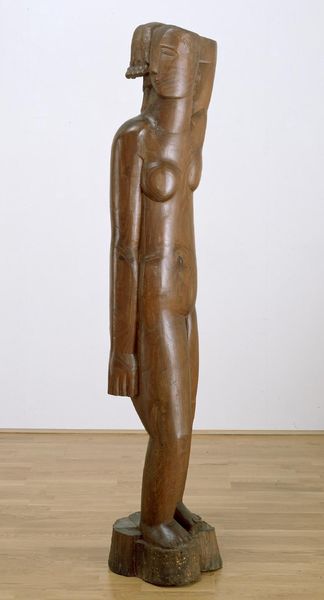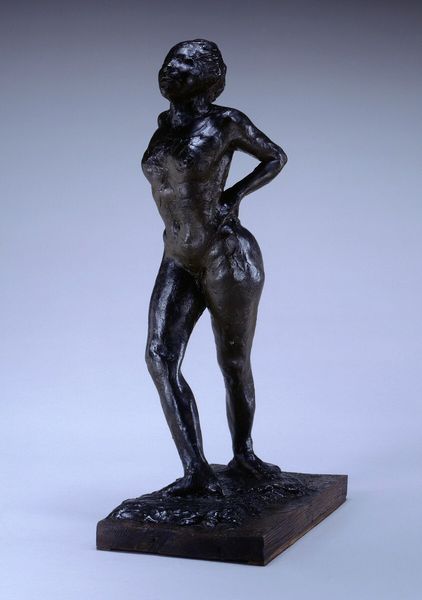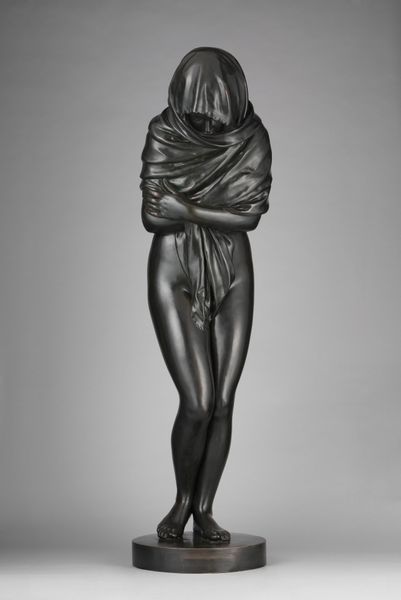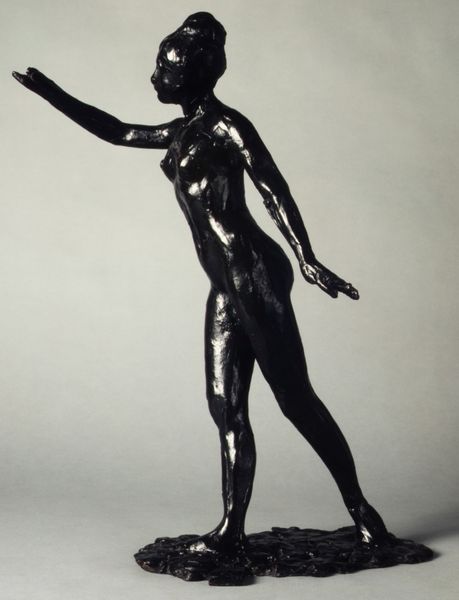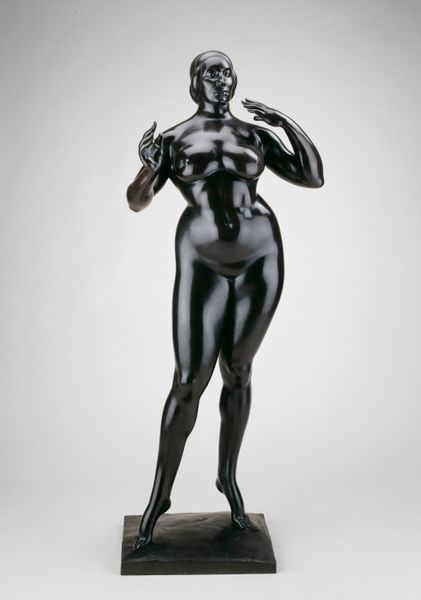
metal, bronze, sculpture
#
portrait
#
metal
#
sculpture
#
bronze
#
figuration
#
geometric
#
sculpture
#
modernism
Dimensions: overall: 149.8 x 45.7 x 76.8 cm (59 x 18 x 30 1/4 in.) gross weight: 95.255 kg (210 lb.)
Copyright: National Gallery of Art: CC0 1.0
Editor: This is Ernest Trova’s "Walking Man" from 1970, a bronze sculpture. The horizontal divisions of the figure, almost like slices, create a curious tension. It's figurative, but very abstracted and geometric. What strikes you about it? Curator: The immediate observation rests upon the segmentation. Note how each layer is distinct, creating a rhythm of form. It compels the viewer to trace the figure's outline, appreciating the nuanced relationship between the individual segments and the cohesive whole. Are you considering the implied movement within this static piece? Editor: The title "Walking Man" does suggest movement, but the rigid form contradicts it. Is this tension intentional, a visual paradox perhaps? Curator: Precisely. It raises compelling questions about representation. How does the artist use geometric abstraction to convey, or perhaps undermine, the idea of a walking figure? Is this a celebration or a critique of the human form? Notice the reflective quality of the bronze. How does that contribute? Editor: It does give it a sleek, modern feel, highlighting the clean lines and geometric shapes, creating visual texture across an otherwise very smooth surface. I'm beginning to think this tension between the geometric shapes and organic figure IS the piece. Curator: Exactly! Trova's use of geometric forms compels us to reconsider our assumptions about the figure and representation. The brilliance is in observing the nuances, and recognizing the potential for endless interpretations, given these basic forms. Editor: I didn't notice how powerfully the formal choices communicated this tension. Thanks for pointing it out. Curator: Indeed. The beauty of art lies in its ability to provoke continuous interpretation, which resides both in the eye of the artist and in the eye of the observer.
Comments
No comments
Be the first to comment and join the conversation on the ultimate creative platform.
